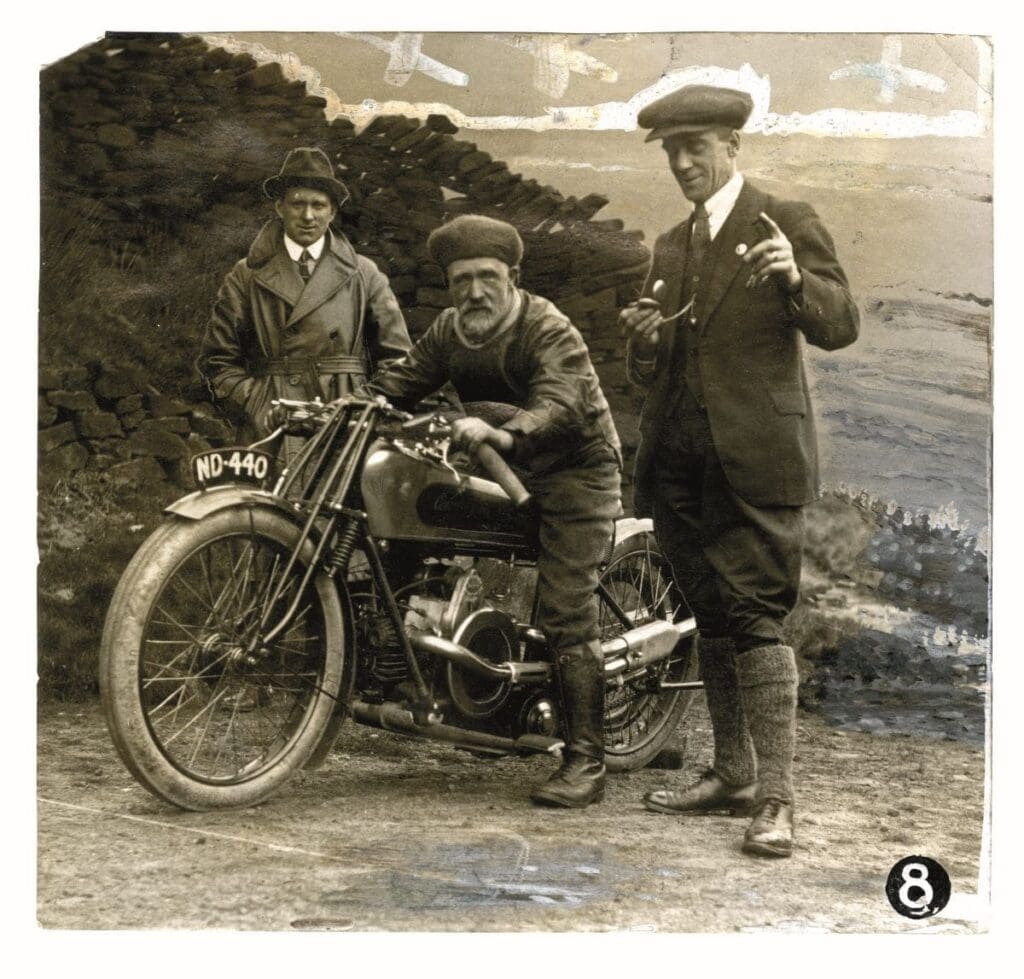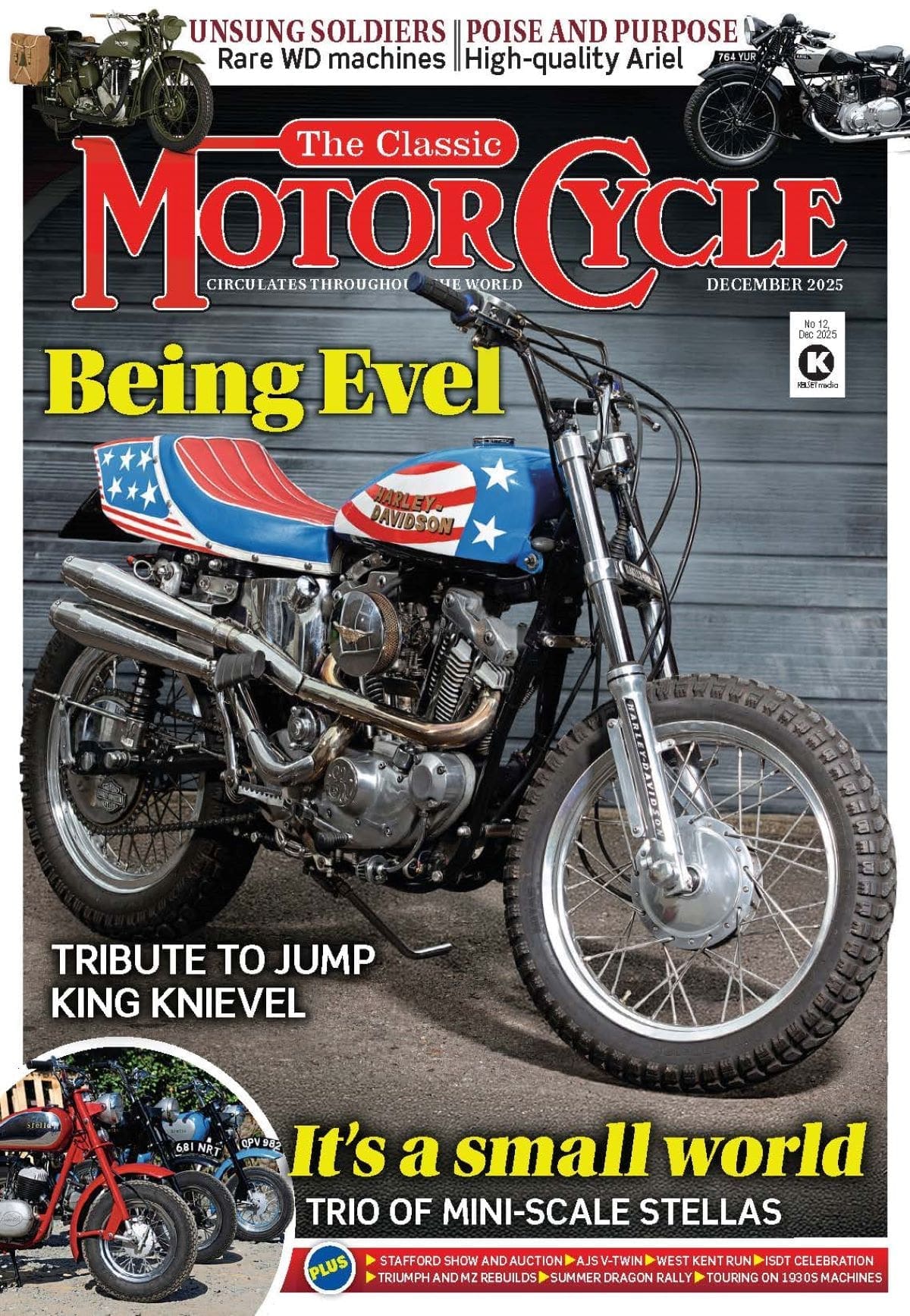Both Coventry Victor, the motorcycle depicted, and Pa Cowley, the pictured rider, seem to have been well known in their day, but now, information is scant.

Photography: MORTONS ARCHIVE
This picture first appeared in the May 24, 1923, edition of The Motor Cycle, with the caption: “Pa Cowley (Coventry Victor) at the Woodhead Hill Climb. He is 58 years old.” The image was used again, in Motor Cycle, November 11, 1977, by Bob Currie, and with a little detail added: “Pa Cowley and his daughter Dot were well known competitors in northern events in the early 1920s and here we see him at the start of a timed hill climb at Heyden Bridge, Holme Moss, where the BBC television mast now stands. The Manchester registration suggests the bike is Pa’s own, rather than a ‘works’ machine.”
Enjoy more The Classic MotorCycle Magazine reading every month.
Click here to subscribe & save.
The handsome Coventry Victor was a fascinating machine, one which is largely forgotten today, with few survivors – there’s only three listed in the VMCC’s Register of Machines, though there are surely more survivors than that, or are there? Trawling through various sources doesn’t bring many (any) examples to light, though Bonhams did sell a Regent, which was basically the machine which became the first Coventry Victor – though we’ll come to that in a bit.
Some background first. The story seems to begin in 1904, when Thomas Morton and William Arthur Weaver founded a proprietary engine manufacturer (Morton and Weaver) in Hillfields, Coventry, initially involved in the aircraft industry, owing mainly to that being Wever’s primary interest – his ‘Weaver Ornithoplane No 1’ was built and flew, briefly, in 1905. A basic monoplane it lacked power and was replaced by ‘No 2’, built from its predecessor. In 1910, this one flew for a quarter of a mile, becoming the first British example of its breed to achieve the feat. Though it did it with an engine not made by Morton and Weaver’s company.
In 1911 the ‘Coventry Victor Motor Company Limited’ was founded, with Morton and Weaver continuing as tool makers, with the new concern to do as its name promised – that was, to become involved in the motor industry. But nothing much seems to have been produced, or at least been reported on, before post-First World War, a 688cc side-valve fore-and-aft flat-twin engine, designed by Weaver, was being supplied to other makers, including McKennzie (which installed it in a spring frame) and London-based Regent. The latter seems to have then become the Coventry Regent, then the Coventry Victor, from 1921. According to a caption to a picture in the January 1984 edition of The Classic MotorCycle, featuring a 1921 example (registration number HP 2860; it’s still on the DVLA database but comes back as ‘not registered for road use’) an elderly signwriter would come in and add the name to the finished petrol tanks. From that, one can assume it wasn’t volume production!
The more sporting Coventry Victor Super Six was added in 1923 – and that’s the model in our picture. The Sturmey-Archer gearbox was under the rear cylinder while it also featured a plated, saddle tank and had twin carburettors. An overhead valve version duly appeared (in 1925) then there was even a speedway version, later still, while Coventry Victor branched into cars, in three-wheeled form, still using the flat-twin engine format.
The most surprising thing about the firm is its longevity – Coventry Victor was still listing a motorcycle range until 1935, though it basically looked the same as the machine in our picture – so very old fashioned by then. While the speedway model was ditched in 1933, the actual flat-twin speedway era had long-passed by then. The three wheelers were made until 1938. After, Coventry Victor continued, making all sorts of proprietary engines, often for marine and industrial applications. There still seems to be a company of that name in business.
So while Coventry Victor is a bit of an enigma, so too is the man in our picture, Pa Cowley. He’s one of those characters whose name appears frequently in 1920s books and magazines, often in Sunbeam contexts, but it’s also often accompanied by a comment such as ‘well known’… But no further details! We do know his real first name was George and that he took part in several TT races, while his son, George Junior, raced in the Isle of Man too.
Pa appeared in the 1922 Senior (19th, Sunbeam) and 1924 Junior (12th, Sunbeam) then retired in both the 1923 and 1925 sidecar races, also on Sunbeams. Judging by the caption accompanying our illustration, he’d have been in his 60th year in the latter. George Junior never recorded a finish in the Island, while daughter Dot, according to some sources, was the reason that fellow Mancunian Harry Reed gave his motorcycles that same name, although that has also been debunked, saying that the motorcycle maker Dot was thus called before Dot Cowley was born.
So, there we have it, a mysterious machine and family too – but, still, what a splendid picture.




